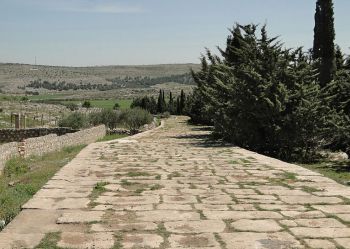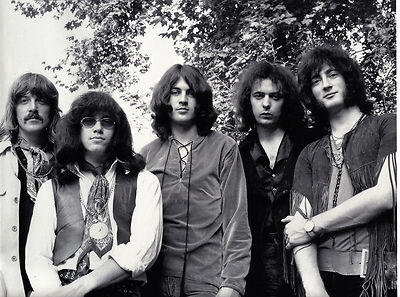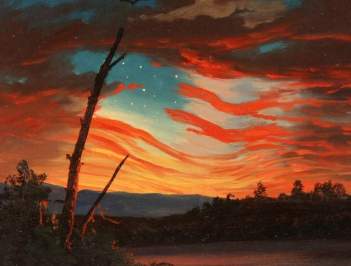
Roman road in Syria, from http://www.geolocation.ws
Before the Advent season, I sat down with some of my Bible reference books to learn about biblical highways. There were several major Middle Eastern highways in the biblical land, in addition to the local roads that Jesus and others traveled. Here are some of my notes from several Bible dictionary articles.
The major road of the ancient Near East was the Via Maris (way of the sea) or in Hebrew, derekh hayyam (Isa. 9:1), also called the Great Trunk Road. It was the most important road from Egypt to Babylonia and many parts of the Fertile Crescent.(1). The road began at Memphis, went first through Gaza. As Barry J. Beitzel puts it, Gaza “sometimes served as a launching pad or Egyptian campaigns through Palestine and Syria. Thus is was an important highway for the security of Egypt.” In Exodus 13:17 it was called the “way to the land of the Philistines”.(2)
The Via Maris then reached Megiddo and had at least three different branches, one along the Sea to Syrian Antioch, and another route eastward to the city of Beth-shan and then north to the Sea of Galilee and then along the western shore of that see to Gennesaret. The third branch crossed the Jezreel Valley, through the hills of Nazareth and near Mt. Moreh, and then made and eastward then northward path where it met the road from Beth-shan near the Sea of Galilee. From the northern places then road continued to other areas , including a long road from Aleppo along the Euphrates River to Babylon, Uruk, Ur, and the Persian Gulf.(3) If you consult a map that illustrates this route and shows you these towns, you can get a better idea of the extensive reach of this particular highway system.
There was also the King’s Highway (derekh hammeleskh). The King’s Highway connected with the Via Maris at Damascus.(5). Gregory Linton writes, “Since the work of Nelson Glueck, historians have used the phrase to refer to a major international route in Transjordan that descended south from Damascus and passed through Ashtaroth, Ramoth-gilead, Rabbath-ammon [Amman], Heshbon, Dibon, Kir-hareseth, and Bozrah until it reached Elath on the Gulf of Aqaba. Its northern section from Heshbon to Ashtaroth was called ‘the road to Bashan’ (Num 21:33, Deut 3:10).”(4). Linton notes that the derekh hammeleskh appears in Num. 20:17 and 21:22, but also may be referred to in Gen. 14 and Num. 33:41-49; thus it was one of the roads of the Israelite wanderings. The King’s Highway was also the trade route fought over in 2 Kings 10:33 and 2 Kings 16:7).(6)
Another important ancient highway was the Assyrian-Hittite Road, which passed through major Assyrian cities toward Kanish, and through Derbe, Lystra, Iconium, and Antioch in Psilidia, also intersecting with Laodicea, Philadelphia, Sardis, and Ergamum. (7)
Still another key road was the National Highway through the Israel highlands, passing through Jezreel, Samaria, Shechem, Bethelem, Jerusalem, Hebron, and Beersheba. Jesus traveled around Galilee and areas like Judea, the Decapolis, Samaria, Phoenicia, and Paneas. Yet another major road passed south from Damascus through Capernaum and Tiberius southwest toward Megiddo then to Caesarea and south along the coast toward Egypt.(8)
Of course, small local linked with international trade routes. In his article, Lincoln Blumell lists several scriptures that detail Jesus’ childhood travel and his adult years. (9)
Michael Vanzant notes that these highways “were more curse than blessing for Israel” when the Egyptian, Assyrian, and Babylonian armies traveled on them. Josiah, in fact, was killed at Megiddo—itself a frequent area of conflict—on the Via Maris while opposing the Egyptian army, in 2 Kings 23:39.(10) As indicated above, the King’s Highway was the trade route fought over in 2 Kings 10:33 and 2 Kings 16:7.(11)
On the other hand, the highways through the Land helped build the Davidic empire. Vanzant writes, “Key to the success and expansion of the kingdoms of David and Solomon was control of the Jezreel Valley and the key routes leading to both Phoenicia and Damascus. During the divided kingdom period, the presence of these two major trade routes in northern Israel created not only financial opportunity but also the religion syncretism seen within the Ahab-Jezebel-Elijah stories (1 Kgs 16:29-22:40). Control of the trade led to great wealth, reflect in the oracles of Amos against the northern kingdom of Israel in the mid-8th cent. BCE.” (12) Of course, the Israelites “were not seafaring peoples,” although Solomon had a fleet and port at Ezlon-geber on the Red sea (1 Kings 9:26-28). (13)
Gregory Linton goes on to describe roads of the Assyrians, and the Persians improved the Assyrian system. Classical Greece had no well developed system of roads, while the Romans had a sophisticated system of thousands of miles of roads.(14) Also the fact that Roman roads were not only well constructed and paved (with flat stone) and capable of high volume traffic, but they were also straight, and marked with mileposts. (15) The apostle Paul used a Roman road from Antioch to Tarsus, Derbe, Iconium, Lystra, and Pisidian Antioch during his second missionary trip (Act 15:41-16:6), and also the Via Egnatia from Neapolis to Philippi and eventually Thessalonica (Acts 16:11-17:1). Linton also says that he would have used the road to Apamea, Laodicea, and Ephesus (Acts 19:1) during his third trip. He also would’ve traveled the famous Appian Way (Acts 28:13-16). (16)
The kind of highway named by the Hebrew word derekh (Num. 20:17, 19, Judg. 21:19) “was the most common type of road in ancient Israel, formed through continual use compressing the soil and removing vegetation, and sometimes improved. The mesilla (built-up road) was intentionally constructed with a high center and drainage on the edges. This type only became common in the Roman era.” The usage of the words was variable: the derekh of Jeremiah 18:15 is not built up, while the derekh of Job 19:12 is built-up. (17) As reflected in passages such as Prov. 15:19, Prov. 22:5. Isa. 40:3, Isa. 57:14, Isa. 62:10, and Hos. 2:6, a typical road was constructed by filling holes on the path, removing large stones and brush, and leveling the path.(18) Roman highways, however, were famously much more sophisticated and lasting.
Michael Vanzant goes on to say that highways are figurative images in the Bible, like Prov 15:19, 16:17, Jere. 18:15, 31:21. “Isaiah 35:8 notes a ‘built-up’ derekh called the Highway of Holiness, the route of returning exiles.”(19) A related image is that of God’s peace. “Often the image of ‘the way’ or a ‘highway in the desert’ that is leveled, open, or straight metaphorically denotes a period of peace, usually a prophetic view of the future. ‘A voice cries out “….make straight in the desert a highway for our God”’ (Is. 40:3). Road systems that were free, protected, and in good condition represented prosperity and peace for the people and nations of the ancient world.”(20)
Among the different reasons for travel in biblical times were religious purposes, such as visits to temples and shrines of particular God, and for Jews, too, the pilgrimage festivals of Passover, Pentecost, and Tabernacles. “Josephus reports that so many Jews would travel to Jerusalem for Passover that the city was literally overflowing with visitors during the time of its celebration.”(21)
Of course, we think of the Jericho road where the Samaritan of Jesus’ story became Good. Emmaus (at least the place archaeologists believe the town existed) was about seven miles northwest of Jerusalem, and it was along that road where Jesus met the two downcast disciples in Luke 24. And the Via Dolorosa is today a Jerusalem street but was a portion of a Roman-era road that passed through the city.
Notes:
1. Lincoln Blumell, “Travel and Communication in the NT,” The New Interpreter’s Bible Dictionary, Vol. 5, S-Z (Nashville: Abingdon Press, 2009), 656-657.
2. Barry J. Beitzel, “Roads and Highways (Pre-Roman), The Anchor Bible Dictionary, Vol. 5, O-Sh, (New York, Doubleday, 1992), 778
3. Beitzel, “Roads and Highways (Pre-Roman), 778-779
4 .Gregory L. Linton, “King’s Highway,” The New Interpreter’s Bible Dictionary, Vol. 3, I-Ma (Nashville: Abingdon Press, 2008), 523.
5. Beitzel, “Roads and Highways (Pre-Roman) 779.
6. Linton, “King’s Highway,” 523.
7. Beitzel, “Roads and Highways (Pre-Roman), 780.
8. Lincoln Blumell, “Travel and Communication in the NT,” The New Interpreter’s Bible Dictionary, Vol. 5, S-Z (Nashville: Abingdon Press, 2009), 654
9. Blumell, “Travel and Communication in the NT,” 654
10. Michael Vanzant, “Travel and Communication in the OT,” The New Interpreter’s Bible Dictionary, Vol. 5, S-Z (Nashville: Abingdon Press, 2009), 657
11. Linton, “King’s Highway,” 523.
12 Vanzant, “Travel and Communication in the OT,” 657
13 Ibid.
14. Gregory L. Linton, “Road,” The New Interpreter’s Bible Dictionary, Vol. 4, Me-R (Nashville: Abingdon Press, 2009), 826.
15. Linton, “Road,” 825.
16. Linton, “Road,” 826.
17. Michael G. Vanzant, “Highway,” The New Interpreter’s Bible Dictionary, Vol. 4, Me-R (Nashville: Abingdon Press, 2009), 654.
18. Linton, “Road,” 825.
19. Vanzant, “Highway,” 654; Linton, “Road,” 825.
20. Vanzant, “Travel and Communication in the OT,” 656-657.
21. Blumell, “Travel and Communication in the NT,” 653.
See also:
F. F. Bruce, “Travel and Communication in the NT,” The Anchor Bible Dictionary, Vol. 6, Si-Z (New York: Doubleday, 1992), 648-653.
David F. Graf, Benjamin Isaac, Israel Roll, “Roads and Highways (Roman),” The Anchor Bible Dictionary, Vol. 5, O-Sh (New York: Doubleday, 1992), 782-787.




